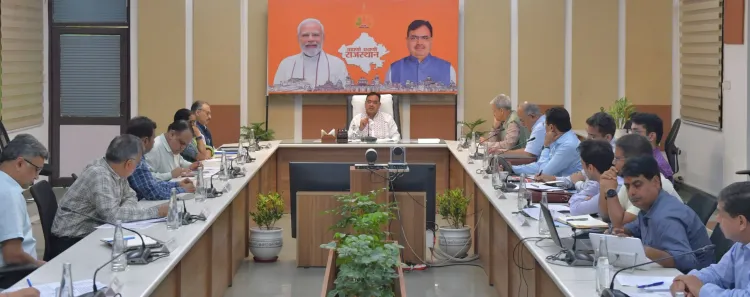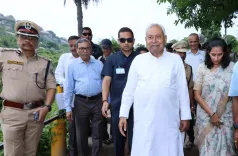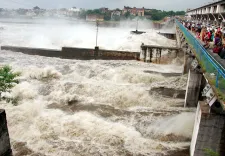How is Rajasthan CM Intensifying Relief and Rescue Operations in Rain-Affected Areas?

Synopsis
Key Takeaways
- Intensified rescue and relief operations by the Rajasthan government.
- Monitoring of water levels in dams and rivers.
- Safety measures for vulnerable populations.
- Public advised to exercise caution during rains.
- 24/7 helpline numbers for emergencies.
Jaipur, July 30 (NationPress) Amid ongoing rainfall in Rajasthan, Chief Minister Bhajanlal Sharma convened a meeting on Wednesday, urging officials to enhance rescue and relief efforts with heightened vigilance in impacted regions.
During the discussion on disaster relief management at his residence, CM Sharma emphasized the need for close monitoring of waterlogged zones and swift action to reduce hazards.
With numerous dams, rivers, ponds, and reservoirs across the state reaching capacity, he instructed officials to consistently oversee water levels, pinpoint areas susceptible to flooding, deploy personnel effectively, and set up warning signs as needed.
Additionally, he underscored the necessity for teams from SDRF, Civil Defence, and Home Guards to be prepared with sufficient resources in at-risk areas.
CM Sharma also mandated that public access in high-risk zones, particularly near culverts and rapidly flowing streams, be restricted by erecting temporary barriers.
In his appeal to the public, CM Sharma advised citizens to exercise utmost caution during this rainy season and refrain from traversing flooded roads, bridges, and rivers. He highlighted the importance of following safety protocols and promptly reporting any emergencies to the control room.
He reiterated that the state helpline numbers 1070 and 112, along with the district helpline number 1077, are available 24/7 for emergency responses.
The Chief Minister further directed officials to ensure that essential services and resources remain uninterrupted in affected areas. He ordered that individuals and livestock displaced by heavy rains be relocated to safe areas equipped with proper sanitation and clean drinking water.
Health officials were tasked with ensuring the availability of medicines, monitoring seasonal illnesses, and offering emergency medical support in hospitals throughout the impacted districts.
During the meeting, the Chief Minister stressed the importance of full preparedness among all departments involved in disaster management.
He urged a particular focus on the safety of children, women, the elderly, and individuals with disabilities.
The Panchayati Raj Department was assigned the responsibility of coordinating resource distribution, while the Public Health Engineering Department was instructed to ensure drinking water availability.
Additionally, he directed officials to repair damaged roads, bolster the pre-flood warning system, engage voluntary organizations in relief efforts, and conduct urgent cleaning of drainage and sewer systems.
Senior officials from various departments, including Chief Secretary Sudhansh Pant, were present at the meeting to provide updates on the existing situation and disaster preparedness initiatives across the state.





